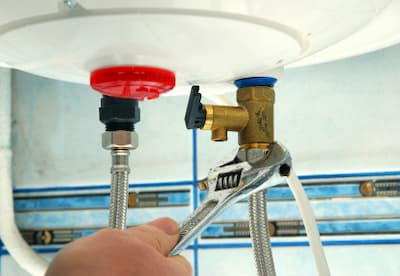Maintaining Your Home's Hot Water System: Important TipsStep-by-Step Steps to Caring for Your Home's Hot Water SystemKey Maintenance Strategies for Your Home's Hot Water System
Maintaining Your Home's Hot Water System: Important TipsStep-by-Step Steps to Caring for Your Home's Hot Water SystemKey Maintenance Strategies for Your Home's Hot Water System
Blog Article
We've noticed this post pertaining to What Kind of Maintenance Do Water Heaters Need? below on the internet and believe it made sense to quickly share it with you on this page.

Warm water is crucial for day-to-day comfort, whether it's for a revitalizing shower or cleaning dishes. To ensure your hot water system runs successfully and lasts much longer, routine maintenance is crucial. This article offers functional pointers and understandings on exactly how to keep your home's warm water system to avoid disruptions and expensive repair services.
Intro
Keeping your home's hot water system might seem complicated, yet with a couple of simple steps, you can ensure it operates smoothly for many years to find. This guide covers whatever from comprehending your warm water system to DIY upkeep pointers and recognizing when to call in professional help.
Importance of Maintaining Your Warm Water System
Regular maintenance not only extends the life-span of your warm water system yet additionally guarantees it runs successfully. Disregarding upkeep can cause reduced effectiveness, higher energy bills, and even early failing of the system.
Indications Your Hot Water System Needs Maintenance
Recognizing when your hot water system requires focus can stop major issues. Look out for indicators such as irregular water temperature level, weird sounds from the heater, or rusty water.
Purging the Hot Water Heater
Flushing your water heater removes debris accumulation, improving performance and lengthening its life.
Checking and Replacing Anode Rods
Anode poles protect against rust inside the tank. Evaluating and changing them when worn out is crucial.
Facility Problems Requiring Specialist Assistance
Examples consist of major leakages, electrical troubles, or if your hot water heater is constantly underperforming.
Routine Specialist Maintenance Conveniences
Expert upkeep can consist of comprehensive examinations, tune-ups, and making sure compliance with safety and security requirements.
Evaluating and Changing Temperature Level Settings
Readjusting the temperature setups guarantees optimal performance and safety.
DIY Tips for Upkeep
You can carry out numerous maintenance jobs yourself to maintain your hot water system in top problem.
Checking for Leakages
Routinely evaluate pipes and links for leakages, as these can cause water damage and higher costs.
Understanding Your Hot Water System
Prior to diving into maintenance jobs, it's useful to recognize the basic elements of your warm water system. Generally, this consists of the hot water heater itself, pipelines, anode rods, and temperature controls.
Month-to-month Maintenance Tasks
Routine month-to-month checks can aid catch minor problems prior to they rise.
Evaluating Pressure Alleviation Valves
Testing the pressure relief valve ensures it works appropriately and prevents extreme stress build-up.
Shielding Pipes
Insulating hot water pipes minimizes warmth loss and can save energy.
When to Call an Expert
While DIY maintenance is helpful, some concerns call for professional knowledge.
Final thought
Normal upkeep of your home's warm water system is crucial for efficiency, longevity, and expense savings. By complying with these ideas and recognizing when to look for specialist aid, you can make certain a reliable supply of hot water without unexpected disruptions.
Water Heater Maintenance: The Basics
Maintaining your water heater will ensure it operates efficiently and has a longer lifespan. Neglecting regular maintenance can lead to costly repairs and an even bigger chunk of your savings if you have to replace it sooner than necessary. But there’s good news: Most water heater maintenance tasks are relatively simple and easy for homeowners with basic DIY skills.
Flush the Water Heater
Over time, sediment and minerals can build up in the tank, reducing its efficiency and potentially causing damage. To flush the tank, turn off the power or gas supply, attach a hose to the drain valve near the bottom and open the valve to drain the water until it runs clear. Ideally, flush the tank annually.
Replace the Anode Rod
The anode rod is a sacrificial metal rod that helps prevent corrosion inside the tank. Inspect and replace it every three to five years or per the manufacturer's recommendation. To replace the anode rod, turn off the power or gas supply, drain a few gallons of water from the tank, unscrew the old rod and replace it with a new one. If the anode rod is significantly corroded or covered in calcium buildup, it's a sign the water heater may need to be replaced soon.
Tune-Up
A yearly tune-up can help identify potential issues and ensure your water heater operates at peak efficiency. This typically involves checking the thermostat, burner assembly (for gas heaters) and any other components specified by the manufacturer. During a tune-up, the technician may also clean the burner and adjust the pilot light (for gas heaters) or examine the heating elements (for electric heaters).
How to Maintain Your Water Heater
Insulate the tank. Insulating the tank can improve energy efficiency and reduce heat loss, saving you money on energy bills. You can purchase precut insulation blankets designed specifically for water heaters or use standard fiberglass insulation wrapped securely around the tank. Check the temperature. The recommended water temperature for most households is around 120 degrees Fahrenheit (49 degrees Celsius). Higher temperatures can increase energy costs and potentially cause scalding. Use a kitchen thermometer to check the temperature at the faucet nearest the water heater. Monitor water pressure. Excessive water pressure can strain the water heater and cause leaks or even tank failure. Install a pressure-reducing valve if necessary. The ideal water pressure range is between 60 and 70 PSI (pounds per square inch). Test the temperature and pressure (T&P) relief valve. The T&P relief valve is a safety feature that releases pressure if the tank gets too hot or the pressure builds up too high. Test it annually by lifting the lever and allowing a small amount of water to release. Replace the valve if it doesn't release water or reseal properly. Check for leaks. Regularly inspect the tank, pipes and fittings for leaks or corrosion. Deal with issues promptly to prevent further damage. Even a small leak can lead to significant water damage over time. Consider a tankless water heater. If your traditional tank-style water heater is nearing the end of its lifespan ( typically 10 years), consider replacing it with a tankless water heater. These units heat water on demand, reducing standby energy losses and potentially saving you money on your energy bills. Schedule professional maintenance. While homeowners can perform many water heater maintenance tasks, it's still a good idea to schedule professional maintenance every few years. A plumber or HVAC technician can thoroughly inspect the unit, identify potential issues and ensure it operates safely and efficiently. https://www.homeserve.com/en-us/blog/home-improvement/hot-water-heater-maintanence/

Do you enjoy more info about How to Maintain a Hot Water Heater in a Few Simple Steps? Try to leave a remark directly below. We'd be glad to find out your thoughts about this article. In hopes that you visit us again in the future. Are you aware of somebody else who is in the market for the subject? Feel free to promote it. We enjoy your readership.
See Availability Report this page